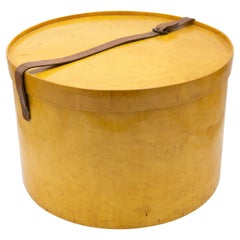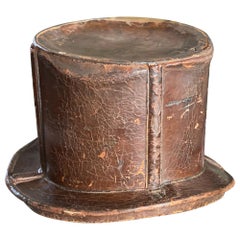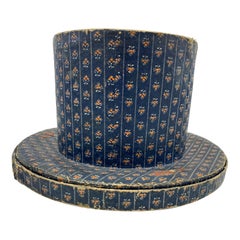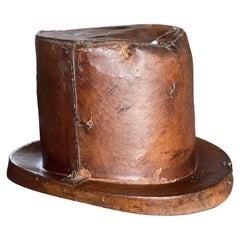Biedermeier Hat Box
20th Century Biedermeier Decorative Boxes
Leather, Birch
Antique Early 19th Century French Biedermeier Hat Racks and Stands
Leather, Fabric
Antique 1820s Austrian Biedermeier Trunks and Luggage
Paper
Recent Sales
Antique Early 19th Century French Biedermeier Antiquities
Leather
People Also Browsed
Early 20th Century Austrian Vienna Secession Beds and Bed Frames
Bentwood
Mid-20th Century Italian Art Deco Night Stands
Brass
20th Century Russian Decorative Boxes
Gold
Early 20th Century Japanese Meiji Commodes and Chests of Drawers
Iron
21st Century and Contemporary French Art Nouveau Chandeliers and Pendants
Bronze
Antique Late 19th Century French Napoleon III Decorative Boxes
Enamel, Ormolu
Early 20th Century French Chinoiserie Screens and Room Dividers
Wood, Mother-of-Pearl
1990s Spanish Post-Modern Prints
Paper
20th Century German Biedermeier Desks
Birch
Mid-20th Century Swedish Art Deco Desks and Writing Tables
Birch
Antique 19th Century French Louis Philippe Wall Mirrors
Silver
Early 20th Century Japanese Taisho Lanterns
Bronze
Vintage 1970s French Rustic Fireplaces and Mantels
Iron
Vintage 1920s Chinese Art Deco Chinese and East Asian Rugs
Wool
21st Century and Contemporary French Modern Side Tables
Brass
1990s Japanese Industrial Table Lamps
Aluminum
A Close Look at Biedermeier Furniture
The authentic Biedermeier furniture on 1stDibs is representative of the first modern European decorative style not dictated by the tastes of the aristocracy. Following the Napoleonic wars, a growing, wealthy urban middle class in the German-speaking states of Central Europe began to demand rights and privileges once granted only to nobles. To avoid trouble, the upwardly striving confined their political discussions to one another’s homes. And so the salon was born.
Cabinetmakers in cities such as Vienna, Berlin and Mainz began to offer goods that reflected the tastes and needs of the new class. The makers of Biedermeier chairs, tables and other furniture used little or no gilding, silver hardware or other lavish ornament. Ebonized trims are common on Biedermeier cabinetry, and neoclassical elements — lyre-shaped chair splats, carved scrollwork, table supports shaped like Greek columns. But the strongest aesthetic statement came from the wood — richly-grained, honey-colored, often book-matched veneers of walnut and fruitwood.
There are two iconic Biedermeier furniture forms, both made to outfit rooms designed for conversation. One is the sofa, deeply upholstered with a strong, architectural wooden frame. The second is the circular pedestal table, which stood at the center of the room, offering a surface on which to place coffee and cake services; or to roll out a map, or sketch out ideas on paper.
“Biedermeier” was originally a derogatory term — it derives from the pen names of two German magazine writers who mocked bourgeois manners. Looking at the elegant and refined antique, new and vintage Biedermeier furniture offered on 1stDibs, that is now an amusing irony.
- What is a Chinese hat box?1 Answer1stDibs ExpertApril 5, 2022A Chinese hat box is a storage container traditionally used in China and other areas of East Asia to store hats and other headwear. Normally, the boxes feature lacquer construction and have a conical shape. On 1stDibs, find a range of Chinese hat boxes.
- What is a hat box called?1 Answer1stDibs ExpertApril 5, 2022A hat box is most often called a hat box or hatbox, though depending on the material it is made of, it could be referred to as a hat tin. It could also be called a bandbox, though this is a more generic term for a box used to carry a variety of garments. Shop a variety of hatboxes on 1stDibs.
- When were hat boxes used?1 Answer1stDibs ExpertApril 5, 2022Hat boxes rose to prominence in the 1800s, and they continue to be used today for storing and transporting important headwear. Shop a large collection of vintage and contemporary hat boxes from some of the world’s top sellers on 1stDibs.



